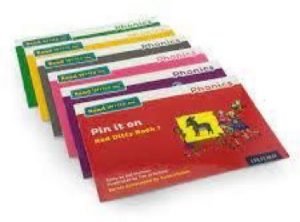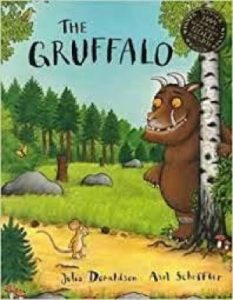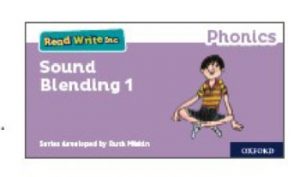Phonics Teaching at Crofton Infants’ School

What is RWI Phonics?
Read Write Inc. is a government backed systematic synthetic phonics teaching programme designed by Ruth Miskin. The programme enables children to achieve high levels of reading success. At Crofton Infants School we believe that reading is the key to all learning and we are fully committed to making sure that every child is a reader by the end of KS1.
Who Teaches RWI Phonics?
We have a dedicated team of Teachers and Teaching Assistants who have all received RWI training and they are referred to as RWI Tutors. They are passionate about achieving success and take part in weekly meetings for coaching and training purposes. The scheme is overseen by the RWI leader, who will monitor RWI sessions and ensure that all teaching is high quality and that children are focused and engaged.
How does RWI ensure success?
Each child is carefully assessed and placed into a RWI group based their phonics sound knowledge and reading skills. This ensures that all children are working at the right level for their ability which is the best way to ensure progress and confidence in their reading skills. Groups are assessed every half term (6 weeks) and children are moved accordingly to either accelerate progress or provide further consolidation. Any children who are not making sufficient progress will be given targeted intervention or additional 1:1 support during afternoon sessions. This compilation of rapid acceleration, streamed groupings and targeted support all helps to ensure our children are confident readers by the time they leave Year 2.

How will my child learn to read?
Children are taught the early sounds in Set 1. This covers the alphabet and a few ‘special friends’ which are two letters which make one sound such as ‘sh’. They will learn to spot and recognise them quickly through fun activities and also to write them using ‘phrases’ to help them remember the correct formation. Tutors teach children ‘pure sounds’ which can be heard using this link.
Using these simple sounds, children will learn to ‘blend’ words together so c-a-t becomes cat. To help the children do this, we have a lovely green frog called Fred! He can only talk in sounds so the children put the sounds together to make the word. We call this ‘Fred Talk’. This is also used in early reading, as when children see a new word they can use ‘Fred Talk’ to break down the sounds and then say or read the word. Similarly, this supports early writing skills as children use ‘Fred Fingers’ to break down a spoken word into its sounds to enable them to write the word. We use the
phrase ‘Say the word – pinch the sounds’ to help children remember.

When they are confident with blending and know all of their Set 1 sounds, the children will move onto Set 2 sounds and then Set 3 sounds, which introduce alternative spellings for sounds they know and more special friends. They may begin to use ‘Fred in their head’ to read more quickly and fluently, which helps to build up speed, however this stage is also tricky for children as they need to be able to spot ‘special friends’ easily within new words.
Words which can be decoded are called ‘Green Words’ as they can be deciphered using phonics knowledge. Unfortunately, there are lots of words in the English language that do not follow these rules … they are called ‘Red Words’ or tricky words and need to be learned by sight.
We use the phrase ‘We can’t Fred a red’ to remind children.

Alien/Nonsense words
We also use ‘Alien Words’ which are made up words that do not make sense. These words test to see if the children can spot any special friends and that they have good sound knowledge, rather than recognising familiar (or sense) words and using memory rather than reading skills. This technique is also used in the National Year 1 Phonics Check, which will be explained in more detail in the Spring Term.
Read Write Inc. Storybook teaching
By moving through the carefully designed stages (or colours) of books which consolidate the sounds learned at the right time, children will gain speed and confidence in their reading ability. As reading becomes more fluent, children begin to understand the stories they read and can enjoy the books. As part of the RWI sessions they will read their group books a total of three times; to support learning new speedy green words and more tricky red words, to investigate vocabulary and to build expression.

They will also complete comprehension activities as part of each book to ensure they know word meanings and can find and retrieve information as well as give opinions about the story or link to other books they know or life experiences.
Whilst your child is learning their Set 1 sounds, they will bring home a wordless story. These books will develop vitally important pre-reading skills, children can tell a story using the pictures and develop their imaginative storytelling. In addition, we recommend Reading for Pleasure. This is a book that they are interested in and have chosen to enjoy with you. They can look at the pictures and spot letter sounds that they know to build confidence but most importantly they should hear you read the book with expression in order to absorb the rich language and vocabulary within in and learn to love story time.

Blending Books & Book bag Books
When your child is learning to blend, they will be given RWI Blending books. To help your child with these, ask them to try to ‘Fred Talk’ the word and blend it together … when they turn the page they will see if they were right! Encourage them to sound out carefully using pure sounds and give lots of praise and support for effort and success. You should also continue to read their library book and encourage them to spot any sounds, special friends or words they know to boost rapid identification by sight.
Once your child is confident with sound blending they will bring home a Book Bag Book. These books allow children to apply their reading skills and are matched to the sounds they have been taught so far. These books should be read at home three times before being returned to school. In the first read your child will be focussing on reading each word individually and it may seem robotic. In this phase very, little comprehension of the story is likely. In the second read, their word recognition will become quicker allowing a faster pace and better understanding of the story. In the third read, the speed should be much quicker and therefore the child is using more brain power to understand the story rather than on reading each word. This is the point when the story becomes meaningful and pleasurable and they can answer questions based on the content. There are questions at the end of the book to check understanding and promote discussion of the story. Please take the time to complete these activities as there are the early comprehension skills which are built upon throughout school.

What are the expected time scales?
The scheme provides a strict routine and is very fast paced. Children will learn a new sound per day so full attendance is vital! (If your child has a holiday for a week – they would miss 5 new sounds and 7.5 hours of focussed learning, and therefore have knowledge gaps which may prevent them from moving forward.) As all children learn at different paces, some will find reading easy while others find it hard. We aim to support pupils who struggle or fall behind with thorough 1:1 or group interventions, and may ask that further work is completed at home to allow them to ‘catch up’. It is therefore hoped that all children will finish the phonics scheme by the end of Year 2.
What are ‘Tricky words’?
Tricky words are words that cannot be ‘sounded-out’ but need to be learned by heart. They don’t fit into the usual spelling patterns. In order to read simple sentences, it is necessary for children to know some words that have unusual or untaught spellings. It should be noted that, when teaching these words, it is important to always start with sounds already known in the word, then focus on the ‘tricky’ part.
What are High Frequency words?
High frequency words (common) are words that recur frequently in much of the written material young children read and that they need when they write.
What do the Phonics terms mean?
Phoneme: The smallest unit of sound in a word, e.g. c/a/t, sh/o/p, t/ea/ch/er.
Grapheme: A letter or group of letter representing one sound, e.g. sh, igh, t.
Clip Phonemes: when teaching sounds, always clip them short ‘mmmm’ not ‘muh’
Digraph: Two letters, which together make one sound, e.g. sh, ch, ee, ph, oa.
Split digraph: Two letters, which work as a pair, split, to represent one sound, e.g. a-e as in cake, or i-e as in kite.
Trigraph: three letters which together make one sound but cannot be separated into smaller phonemes, e.g. igh as in light, ear as in heard, tch as in watch.
Segmentation: means hearing the individual phonemes within a word – for instance the word ‘crash’ consists of four phonemes: ‘c – r – a – sh’. In order to spell this word, a child must segment it into its component phonemes and choose a grapheme to represent each phoneme.
Blending: means merging the individual phonemes together to pronounce a word. In order to read an unfamiliar word, a child must recognise (‘sound out’) each grapheme, not each letter (e.g. ‘th-i-n’ not ‘t-h-i-n’), and then merge the phonemes together to make the word.
Mnemonics: a device for memorising and recalling something, such as a hand action of a drill to remember the phoneme /d/.
Adjacent consonants: two or three letters with discrete sounds, which are blended together e.g. str, cr, tr, gr. (previously consonant clusters).
Comprehension: understanding of language whether it is spoken or written.
